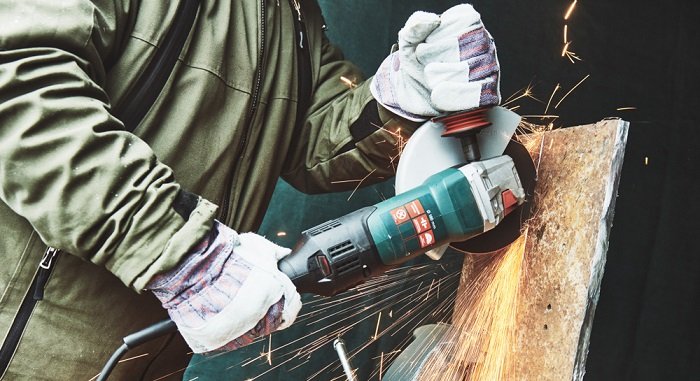If you’re looking to buy a bench grinder but you’re unsure what features you should look for, this article will guide you through the whole process.
The kind of bench grinder you need depends on the kind of work you’ll be doing, so let’s dive into what features suit different needs.
Size
You should also understand that your bench grinder will serve different purposes such as:
Trimming: removing metal or flash after larger cuts.
Deburring: removing metal after sawing or filing.
Shaping: a more delicate grinding process used to shape metal.
Bigger grinders that do trimming would devour smaller components instead of shaping them.
On the other hand, a smaller grinder would only scratch big pieces that you want to cut.
That’s why you should always pick a suitable size for your work.
Motor
The motor is the building unit of the bench grinder as it directly affects the performance of your unit.
Larger motors will definitely provide more power as well as allow you to use bigger wheels. However, they’ll require more space.
A 1 HP motor would be ideal for cutting tough metals and hardened steel. A ¾ HP one would also help you through many tough DIY projects.
If you’re going to be doing light to medium-duty jobs, then you can save by getting a 1/5 or ½ HP motor.
Speed
The speed that the grinder works at is related to the motor’s horsepower and is measured in revolutions per minute or RPM.
The faster your grinder’s wheel spins, the quicker you’ll be able to finish your work.
Moreover, the tougher your metal, the higher the speed of your grinder should be –so don’t settle for less than 3000 RPM.
Unless you’re going to be working with wood, in which case you can go for a 1750 RPM grinder to save some money. It won’t be the best, but it’ll do the job.
There are two things to consider when you’re assessing the grinding wheel.
You’ll find 6-inch wheels and 8-inch ones, and you should pick the bigger one if you’re doing more professional work.
8-inch wheels work at slower speeds but they don’t require as much maintenance as 6-inch ones.On the other hand, 6-inch wheels suit most people that are looking for versatility and high-speed work. However, you’ll need to change them more often.
The Grits of the Wheel
You can find different grit sizes: 36-grit, 60-grit, and 100-grit wheels.
The tougher your material is and the smoother you want your final result to be, the higher the grit number on your wheel should be.
If you’re going to do a lot of sharpening, go for a coarse grit wheel. While if you’re focused on sharper results, go for a fine grit wheel.
Note: If you want to remove rust from different metals, go for a wire wheel.
Color
Grinding wheels are color-coded and each color refers to how fine a wheel would grind and consequently what you can use it for:
Brown
Used for heavy fettling or trimming.
Grey
Used for grinding everyday steel.
White
Used for sharpening various tools.
Green
Used for finely grinding blades, carbide tools, and drill bits as they are made of silicon carbide.
Safety
Safety is one thing you should always pay attention to when using tools –especially when they’re power tools.
And the things you should look for on a bench grinder are:
Spark Deflectors
The spark deflectors or wheel guards should cover around 75% of the wheel and leave 25% for you to work. Their job is to keep the sparks that result from grinding metal or the fragments from the wood out of your way. They also work on keeping your fingers or objects out of the grinding wheel.
Eye Shield
Eye shields serve a similar function to the housings. They’re clear plastic covers located above the opening where your material touches the grinding wheel. They prevent scraps from flying off and hitting you in the eye or face.
Cooling
Your bench grinder could be a “wet grinding machine” which means that they come with built-in cooling so that your wood doesn’t catch fire or that your metal doesn’t turn orange due to the excessive friction.
However, if your bench grinder doesn’t have that, you should place a pot or a bucket with water beside you so that you can dip your piece into it when it starts to overheat.
Dust Exhaustion
Having dust and debris flying around in your garage or workshop is inevitable when you’re working with a bench grinder.
So having a dust exhaustion system, ports or vents is a great way of keeping your workplace tidy and maximizing your visibility by clearing the way for you.
